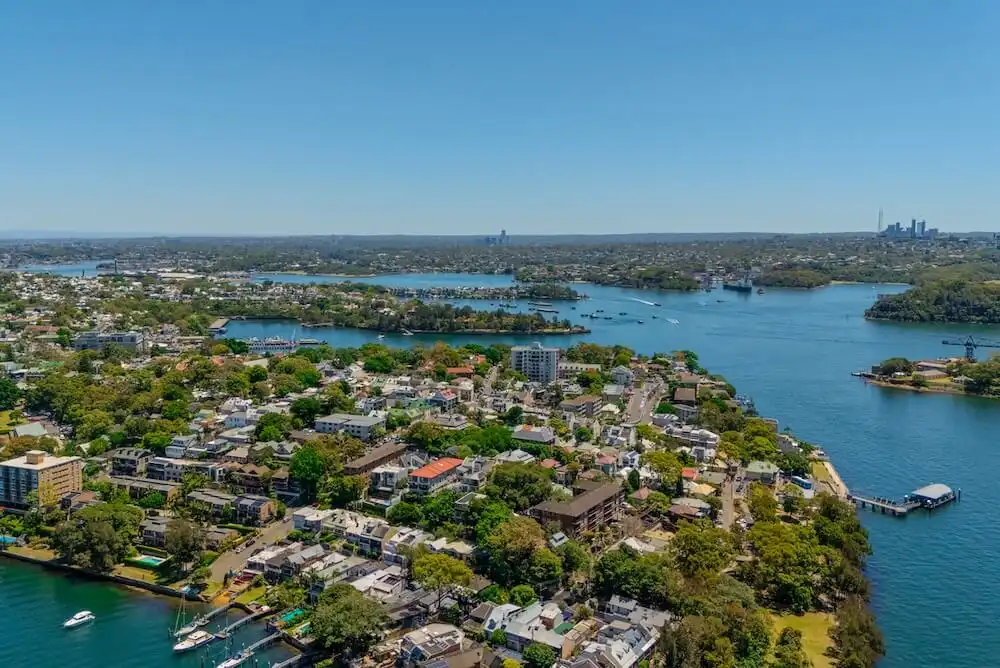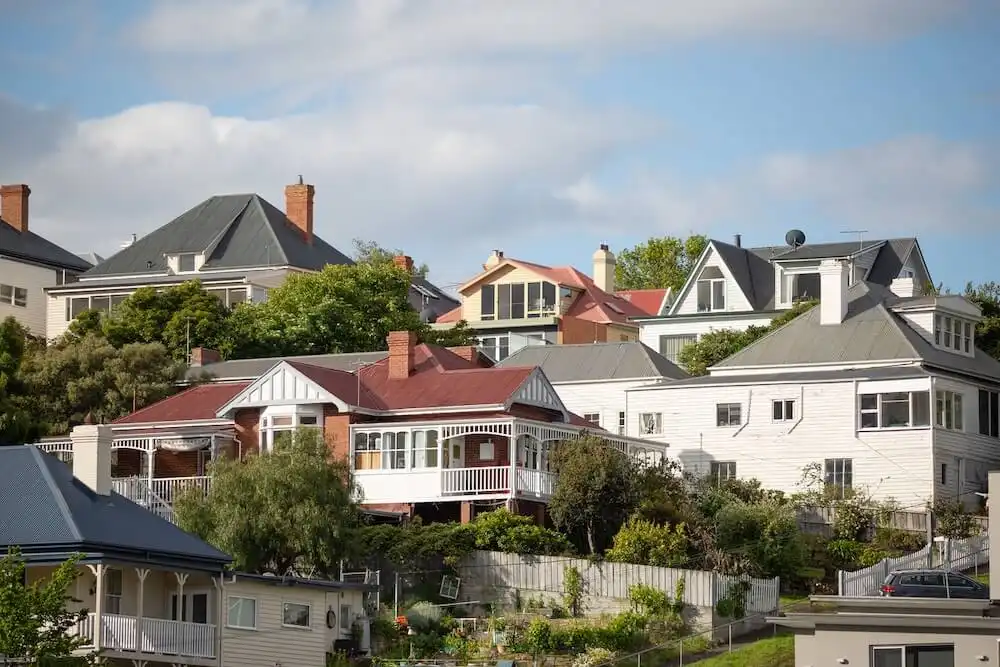Australian property market update - May 2020
According to the latest CoreLogic Home Value Index, national dwelling values have posted their first month on month decline since June last year.
May market update key points :
- Five of the eight captial cities saw a decline in property prices in May
- National values fall only half a percent over the month indicating downturn in house values is milder than expected
- Hobart was the best performing capital city over the month with 0.8 per cent increase in prices
- Darwin was the worst performing captial city with decrease of 1.6 per cent
National property values: May 2020

Houses
$571,999
Monthly change: -0.4%
Units
$523,326
Monthly change: -0.2%
Although five of the eight capital cities saw a decline in prices in May, national dwelling values reported only a slight reduction of 0.4 per cent over the month to a median value of $557,818.
CoreLogic Head of Research, Tim Lawless said that this may indicate that the downward trajectory of housing values could be milder than first expected.
“Considering the weak economic conditions associated with the pandemic, a fall of less than half a percent in housing values over the month shows the market has remained resilient to a material correction.”
Taking a look at capital and regional markets, combined capitals recorded a decline of 0.5 per cent to $645,511. Regional markets on the other hand have remained resilient with values remaining unchanged in May at $397,388.
"A fall of less than half a percent in housing values over the month shows the market has remained resilient to a material correction.”
Mr Lawless notes that while some regions remain stable, the true test will come in September.
“Eventually government stimulus will wind back and borrower repayment holidays will expire. In the absence of these policies, housing values could come under some additional downwards pressure if economic conditions haven’t picked up towards the end of the year.”
While transaction activity remains lower than average, May saw sales activity bounce back 18.5 per cent. This is consistent with easing of social distancing policies throughout the country and the ANZ Roy Morgan index reporting consumer confidence increasing for nine straight weeks.
“With consumers feeling more confident, households are better equipped to make high commitment decisions such as buying or selling a home.”
Strengthened consumer confidence has led to a rise in property listings now up 8.1% compared with the end of April.
Sydney and regional NSW
Houses
$1,016,726
Monthly change: -0.6%
Units
$772,204
Monthly change: -0.1%
Regional NSW property prices
Houses
$479,956
Monthly change: -0.2%
Units
$407,733
Monthly change: +0.4%
Although overall Sydney property values have eased 0.4 per cent lower in May to $885,159, housing values across Sydney are still 14.3 per cent higher than they were a year ago.
Sydney’s downturn is led by the most expensive quartile of the market with the latest figures revealing a decline of 0.6 per cent, while the the most affordable lower quartile posted a 0.1 per cent increase.
According to Mr Lawless, while the high end property market has dipped slightly, when looking on an annual basis, this sector of the market historically posts the most significant growth. “Sydney’s top quartile is up 16.5 per cent over the year,” he said.
In regional NSW, prices have remained fairly stable with combined dwelling values decreased a slight 0.1 per cent to $467,308 with unit prices increasing 0.4 percent.
Regional markets often see a lag in price movements and can be expected to lower in the months ahead.
Melbourne and regional VIC
Houses
$809,274
Monthly change: -1.1%
Units
$580,009
Monthly change: -0.6%
Regional VIC property prices
Houses
$416,528
Monthly change: 0.0%
Units
$291,396
Monthly change: +0.5%
Property values have fallen 0.9 per cent over the month to $686,798.
Housing values in Melbourne are still 11.7 per cent higher than they were a year ago due to previous high growth.
Similar to Sydney, Melbourne’s most expensive market recorded the most rapid decline of 1.3 per cent over the month compared to a 0.6 fall across the “middle” of the market. Falls across the most affordable market was significantly lower at 0.3 per cent.
Regional Victoria values have remained flat over the month with the median price of a home at $393,600.
The easing of real estate restrictions at the end of May allowing up to 20 people at auctions and open for inspections in Victoria beginning June 1 is expected to boost auction clearance rates and consumer sentiment in the coming weeks.
Brisbane and regional QLD
Houses
$559,975
Monthly change: 0.0%
Units
$388,894
Monthly change: -0.6%
Regional QLD property prices
Houses
$392,383
Monthly change: 0.0%
Units
$367,222
Monthly change: +0.3%
In May, overall property prices for all dwellings in Brisbane decreased 0.1 per cent. This takes the median price for a home in Brisbane to $508,386. Despite a slight decrease, values are still 4.3% higher than they were a year ago.
Brisbane house prices remained unchanged while Brisbane units dropped 0.6 per cent to $388,894.
In regional Queensland, house values remain consistent with last month at $392,383 while units improved slightly, growing by 0.3 per cent.
Brisbane premier Annastacia Palaszczuk recently announced real estate restrictions to be brought forward - allowing only 10 people at public auctions and open homes would be changed to 20 from June 1 after new cases of Covid-19 remain low.
Hobart and regional TAS
Houses
$514,496
Monthly change: +0.8%
Units
$403,382
Monthly change: +0.6%
Regional TAS property prices
Houses
$342,044
Monthly change: +0.7%
Units
$270,786
Monthly change: -0.2%
Of all the capital cities, Hobart dwelling values performed the best over May recording an increase of 0.8 per cent to $486,056. When looking at annual property values, prices are also 6.2 per cent higher than they were last year.
Both houses and unit values in Hobart saw gains in the month of 0.8 per cent and 0.6 per cent respectively.
In regional Tasmania, house values rose 0.7 per cent to $342,044 while unit prices decreased a slight 0.2 per cent. For all properties, overall values were up 0.6 per cent to $329,357.
Canberra and the ACT
Houses
$716,663
Monthly change: +0.7%
Units
$444,292
Monthly change: +0.1%
Canberra property values remained positive in May with house values up 0.7 per cent to $716,663. Unit values also inched up 0.1 per cent over the month.
Canberra property values still remain 5.1 per cent higher than they were the same time last year with an overall median value of $637,279.
The large percentage of the Canberra workforce in the public sector helps to shield from the mass unemployment seen in other cities.
Adelaide and regional SA
Houses
$478,294
Monthly change: +0.4%
Units
$335,052
Monthly change: +0.5%
Regional SA property prices
Houses
$249,959
Monthly change: +0.8%
Units
$195,897
Monthly change: -0.5%
Adelaide properties performed well over May as one of the three capital cities that posted growth. Dwelling values were up 0.4 per cent over the month bringing the median value to $441,184. Property prices are currently 1.8 per cent higher than they were last year.
In regional South Australia, house values increased 0.8 per cent while unit values dipped a slight 0.5 per cent to $195,897.
Perth and regional WA
Houses
$461,366
Monthly change: -0.6%
Units
$355,576
Monthly change: -0.1%
Regional WA property prices
Houses
$327,506
Monthly change: -0.8%
Units
$212,286
Monthly change: -0.7%
In May, Perth property values recorded declines of 0.6 per cent and 0.1 per cent for houses and units respectively. This brings the median value for all properties to $443,669.
When looking on an annual basis, apart from Darwin, Perth was the only other capital city to record a value lower than at the same time last year, with a drop of 2.1 per cent.
In regional Western Australia, property values have also been trending down with overall properties down 0.8 per cent to $315,908.
Darwin and regional NT
Houses
$473,861
Monthly change: -0.9%
Units
$272,648
Monthly change: -2.9%
Regional NT property prices
Houses
$403,100
Monthly change: +1.9%
Units
$ n/a
Monthly change: n/a
In May, Darwin property prices have seen the highest month on month decline at 1.6 per cent. This brings the median value to $393,939.
Darwin houses dropped 0.9 per cent to $473,861 while units had the most significant decline of all the capital cities with a 2.9 per cent decrease.
On the other hand, in regional Northern Territory, house prices posted the highest monthly growth with values up 1.9 per cent.
Rents and rental yields
Following a 0.4 per cent decline in April, rents held steady in May with the national rent index recording a slight increase of 0.2 per cent over the month.
Despite this, every capital city except for Perth recorded a decrease in rents over the past two months. Rents for units have been particularly impacted in capital cities with combined capitals recording a fall of 0.8 per cent. Rents for houses in capital cities remain unchanged.
According to Mr Lawless there are many factors affecting declining rents for inner city apartments, “with a large amount of new inner city, high rise apartment projects recently completed, and stalled migration and foreign student arrivals, inner city unit rents are likely to fall more substantially than other sectors of the market.”
The best performing rental market goes to Perth, the only capital city to see an increase in rent over the last two months with an increase of 0.6 per cent for houses and 0.1 per cent for units.
Every capital city except for Perth recorded a decrease in rents over the past two months.
Hobart on the other hand has had a notably sharp decline in rents for both houses and units dropping 1.4 per cent and 2.0 per cent respectively. This is likely due to a large number of short term rentals transitioning to permanent rentals which has in turn caused supply to outstrip demand.
Looking at rental yields, Sydney’s gross rental yields have reached record lows at 2.7 per cent for houses. Melbourne is not far behind at 2.8 per cent. Darwin comes out on top with the highest rental yields of 5.3 per cent for houses and 6.8 per cent for units.
In regional areas, Victoria has reported the lowest rental yield over the month at 4.4 per cent for houses. On the other end of the spectrum, the Northern Territory recorded a 6.9 per cent increase.
The current national rental yield sits at 3.6 per cent for houses and 4.1 per cent for units.
What does this mean for the Australian property market? What is the outlook for the months ahead?
In the months ahead, Mr Lawless anticipates that rental rates will continue to fall more than housing values which will in turn, continue to place downward pressure on rental yields. Units are expected to be more negatively affected than houses.
“The double whammy of higher supply and less rental demand, especially across unit markets, is likely to place further downward pressure on yields,” he said.
Mr Lawless believes that the end of September will be very telling.
“Once stimulus measures start to taper and repayment holidays expire, this is where we could see a rise in mortgage arrears, and the potential for a lift in distressed sales,” he said.
Moving forward, one of the biggest influencing factors will be the level of unemployment, with Mr Lawless noting that, “with the cash rate at its effective lower bound, improved employment conditions will be a factor in steadying purchasing capacity for housing, and servicing mortgage debt.”
Mr Lawless concludes that encouragingly, the RBA governor recently noted that the economic downturn may not be as severe as earlier thought, with the economic trajectory somewhere between the RBA’s best case and base case scenarios.







